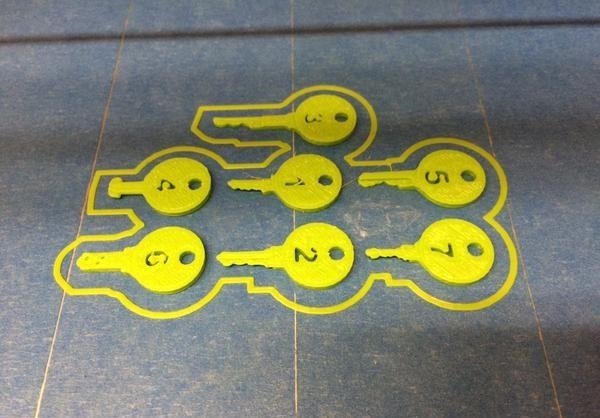Moto G (late 2015) review
THE GOOD The new Moto G has improved design, water resistance and a stepped-up camera. The design and hand feel are great, and the battery lasts more than a full day.
THE BAD Processor speed lags if you're trying to do many things at once. The entry-level version (8GB of storage, 1GB of RAM) is too underpowered compared to the slightly pricier step-up model.
THE BOTTOM LINE With added water resistance and a better camera, the LTE-enabled Moto G is one of the best affordable unlocked smartphones around right now.
7.5OVERALL
DESIGN8.0
FEATURES7.0
PERFORMANCE7.0
CAMERA8.0
BATTERY LIFE8.0
When I think of what I want in an everyday phone, I think of battery life, camera, how it feels, and how durable it is. And yeah, how the screen looks. That's what pretty great about Motorola's latest update to its midrange budget smartphone, the Moto G: it's a do-pretty-much-everything-you-need, 5-inch Android smartphone...that costs less than half of your average premium handset.
The Moto G's been around for a couple of years, but
last year's version lacked faster LTE in the US (a
global version with LTE has been available since April). This new model adds a lot more than just LTE: it's got better front and rear cameras, has serious dunk-in-a-pool water resistance, and its design is even a bit snazzier. It feels more like its upscale Moto siblings than ever before: in fact, it might as well be the lost twin of the
2013 debut Moto X.
I've been using the
Moto G for about a week, and while it's clearly not a super-premium phone, it's got enough of what the average person would need, and then some. A clean, up-to-date version of
Android5.1.1 and strong battery life only sweeten the deal.
View Full Gallery (20 Photos)Sarah Tew/CNET
The Moto G comes in two versions: 8GB of storage and 1GB of RAM for $180 (£179 in the UK), or 16GB storage and 2GB of RAM for $220 (£209 and AU$369). Some carriers are selling the Moto G for even less: in the UK, it's being offered by carriers and retailers for as low as £159. We reviewed the 16GB model, and heartily recommend you pay up for that one; 8GB of storage is just too slight. If you're in Australia then only the 16GB is on offer anyway.
If you add up its design, performance, added water-resistance, and its camera and battery, this is one of the best phones for its price anywhere. Although, it's the budget phone I'd recommend for its overall look, feel and performance, there are other strong contenders. The
Alcatel OneTouch Idol 3 has higher specs across the board, but when I think about the one budget Android I want to grab, this Moto G is it.

View Full Gallery (20 Photos)Bright and comfy.Sarah Tew/CNET
Design and feel: Plastic comforts
5 inch, 720p display (1,280x720 pixels)
5.59 by 2.85 by 0.48 inches (142.1 by 72.4 by 11.6mm)
5.47 ounces (155g)
For an affordable phone, the Moto G feels awfully nice to hold, not cheap or slapped-together at all.
It's the lines and curves of the G that make it feel special. Yes, it's a plastic design, but the way it all comes together feels satisfying. Sure, the frame is plastic. But from a distance (and even in the hand), it feels nicer than older G models. I used to love the
2013 Moto X for its curved design that fit neatly in my palm. The new Moto G has that feel, but with a slightly larger screen and body. In a lot of ways, it also reminds me of the
Nexus 5.
Even though it has a 5-inch screen, this phone feels hand- and pocket-friendly. It's a good medium-size phone by today's gargantuan standards. The front edge-to-edge Gorilla Glass looks sharp, too. I did, however, already ding a plastic corner a bit.
The 720p display looks bright and crisp -- you probably won't notice that it isn't higher-res, because at 294 pixels per inch, this still feels HD (pixel count is much lower than on the 1080p HD Alcatel Idol 3). And for a budget phone, the colors and clarity look great (the only issue: turning to landscape mode when you have sunglasses on creates huge polarization). The front-facing speakers are pretty loud, too, offering decent sound for movies and games.

View Full Gallery (20 Photos)Sarah Tew/CNET
The rear of the Moto G has a swappable shell. Motorola's MotoMaker, a website to create customized phones, exists in a pared-down mode for the Moto G in certain markets (Brazil, France, Germany, Mexico, the UK and the US). You can create your own MotoMaker custom design for the G, or buy new back plates separately.

View Full Gallery (20 Photos)Snapping the cover on and off to get to the SIM card.Sarah Tew/CNET
You can pick a black or white front, 10 different color options for the back, and one of 10 different color accents that change that little camera-bar on the back to pink, orange, champagne or something else. Motorola also sells five different-colored, textured flip-shell cases. No, this doesn't have fancier metal or wood backs, but the G still feels like it's got enough fun colors to have some personality.
The textured plastic back on my model felt comfy, but some people might prefer a smoother finish. You need to snap the back on completely for it to be water-resistant, though. I feel like no matter how many times I put it on, I missed a few snaps.
View Full Gallery (20 Photos)Warning: Don't swim with this phone (shower, maybe)Scott Stein/CNET
Showering with my phone
The Moto G adds
IPX7 water resistance, a big plus for those who are afraid they'll drop their phone in the toilet. IPX7 means the phone can survive dunking in one meter (three feet) of water for up to 30 minutes. That means that the new Moto G, like other pricier phones out there, is really, truly, an all-weather phone. As long as the rear plastic cover is snapped on properly, you'll be fine.
I took a shower with the Moto X, and all went well. Shower sprinkles set the capacitive display nuts, and water droplets affected speaker volume, too, but I could listen to music while I shampooed, and also check emails. All smartphones should have this level of water resistance. I even dropped it into a glass of water and let it sit there for a while on my desk. Still worked.
View Full Gallery (20 Photos)The Moto G's bath time.Sarah Tew/CNET
I still wouldn't recommend swimming with it, and definitely don't take it into salt water (corrosion fears), but at least this means the G is ready for a good, wet day outdoors, without any annoying port covers to worry about. Use it in the rain, send an email in the bath, take a photo in the hot tub. Breathe easy: you don't have to worry about dropping this phone in a puddle -- unless the puddle isn't water, or is filled with sharp rocks, or both.
Clean Android, plus a few Moto apps
Android OS 5.1.1 (Lollipop)
Moto Assist and Moto Display apps: context-sensitive help, and lock-screen one-touch notifications
FM radio app
The big advantage to Motorola's recent phones has been how clean they are, Android OS-wise. If you like a "pure" version of Google's Android without lots of pre-installed junk or customized layers, this is about the closest you can get outside of a Nexus phone.
View Full Gallery (20 Photos)Almost feels like a Nexus phone.Sarah Tew/CNET
The Moto G comes with
Android 5.1.1 (Lollipop) installed, and for the most part it runs well. Instead of layering some sort of extra experience on top of Android, this feels just like regular Android Lollipop as Google intended. Apps pop up quickly, and a folder of Google apps lies ready for you on the home screen, but other than that, the experience is minimal and clean.
View Full Gallery (20 Photos)Moto Assist has a few tricks up its sleeve.Sarah Tew/CNET
Motorola does have a few of its own apps to offer, tastefully lying in wait in the app grid. You'll find this all in the Moto app. You can't start talking to your phone hands-free like you can on the Moto X, but you can set the phone to automatically adjust notifications and other settings by contextual action or location ("sleeping," or "in a meeting") via a function called Moto Assist.
There are also some physical gestures that can be used, like shaking your phone to turn on the flashlight (which works only some of the time) or flip your phone with your wrist to turn on the camera (ditto). The best is Moto's easy-glance lock screen for notifications, called Moto Display: tap to see important info, or slide up to open the app.
View Full Gallery (20 Photos)FM radio! As a local sports junkie, it comes in handy.Sarah Tew/CNET
There's even a real FM radio, which uses plugged-in
headphones as an antenna. Laugh if you want, but I love using an actual FM radio to listen to radio broadcasts of local NFL games (local sports games are usually blacked out on national streams).
Cameras and video
13-megapixel rear camera
Dual LED CCT flash (rear camera)
1080p video recording, 30fps
5-megapixel front camera
The camera is one of the key areas that's seen a boost in the new Moto G. It now packs a 13-megapixel sensor, rather than the 8-megapixels we've seen before. While this is a very generous amount for a budget phone, Motorola isn't alone here. Other phones in this range, like that Alcatel OneTouch Idol 3, also use a 13-megapixel sensor.
Every phone manufacturer is throwing more megapixels into its phone specs, but there are some added photo hardware improvements beyond that; most notably, a new dual-LED flash on the rear cam to color-correct for night shots. The front camera's also been boosted to 5 megapixels over the previous 2, which is the kind of evolution we want to see out of this Moto G family.












































